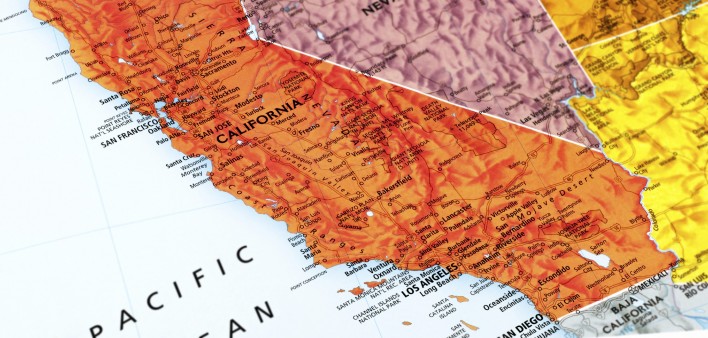Use of pre-exposure prophylaxis (PrEP) has expanded rapidly in recent years among beneficiaries of California’s Medicaid system, known as Medi-Cal. Following trends seen across the country, white men older than 25 are the predominant population using Truvada (tenofovir disoproxil fumarate/emtricitabine) as prevention for HIV.
Presumably the vast majority of male users of PrEP are men who have sex with men (MSM).
Given the fact that Black and Latino men lag behind their white counterparts in adopting PrEP, the racial disparities in the prevention pill’s use set the stage to possibly widen existing HIV transmission rates. In California, as nationwide, Black MSM as a subgroup have the highest rate of new HIV diagnoses.
Researchers at the California HIV/AIDS Policy Research Centers have published a new report about PrEP uptake among Medi-Cal beneficiaries in California. They drew their data from the Pharmacy Benefits and Information Management Division of the California Department of Health Care Services.
The investigators analyzed PrEP use among the state’s Medi-Cal population between 2012 (PrEP was approved in July of that year) and 2016. They focused much of their analysis on half-year periods starting in the second half of 2013 and continuing through the second half of 2016.
The Affordable Care Act’s (ACA, or Obamacare) vast expansion of Medicaid eligibility kicked off in January 2014 and resulted in a considerable influx of beneficiaries to Medi-Cal. (In states that expand Medicaid under the ACA, those with an income below 138 percent of the federal poverty level are eligible.) California’s public insurance system made access to PrEP easier for beneficiaries in April 2014 by removing a restriction that required health care providers to obtain prior authorization for a prescription to Truvada for HIV prevention.
During the first half of 2012, Medi-Cal had just 79 PrEP beneficiaries, a figure that ballooned to 3,295 by the end of 2016, for a 25-fold increase in the rate of Medi-Cal enrollees receiving Truvada as prevention: from 9 to 228 per million enrollees.
PrEP has become especially popular in San Francisco, according to a comparison of PrEP use trends in California’s three biggest cities. Between the end of 2013 and the end of 2016, the number of Medi-Cal PrEP beneficiaries in Los Angeles rose from 33 to 1,246, for a rate increase of 13 to 311 per million enrollees, a 24-fold increase. Between 2012 and 2013, the number of PrEP beneficiaries in San Francisco was below 10 during each half-year period and by the end of 2016 had shot up to 548, for a 32-fold rate increase in the rate of use, from 77 to 2,487 per million enrollees. In San Diego County, the number of PrEP beneficiaries was generally below 10 per half year between 2012 and mid-2014. Between the end of 2014 and the end of 2016, San Diego’s rate of PrEP use rose 10-fold from 43.5 to 443 per million enrollees.
The rate of PrEP use among Medi-Cal enrollees increased from a respective 8.5 and 17.4 per million enrollees in rural and urban areas at the end of 2014 to a respective 104 and 253 per million enrollees, a respective 12-fold and 15-fold increase.
The rate of PrEP use increased much more rapidly among males than among females. Between the end of 2013 and the end of 2016, the respective rate of PrEP use among males and females increased from 12.9 and 6.9 per million enrollees to 450 and 34.8 per million enrollees, a respective 34-fold and 4-fold increase.
At the end of 2013, the rate of use per million enrollees was 16.6 among whites, 14.6 among Blacks, 3.4 among Latinos, 25.9 among Asians and 11.7 among those of “other” races. These rates of use per million enrollees increased to 447 among whites (a 27-fold increase), 282 among Blacks (19-fold increase), 106 among Latinos (31-fold increase), 229 among Asians (9-fold increase) and 306 among those of “other” races (26-fold increase).
Breaking down the statistics by age, PrEP’s use followed a lopsided bell curve in which there was only modest use among those younger than 25 and considerable use among those between 25 and 34, with PrEP use rates steadily declining across older age brackets.
The researchers did not produce a figure for PrEP use among 13- to 24-year-olds at the end of 2014; but at the end of 2016, this group had a PrEP use rate of 153 per million enrollees. Those between the ages of 55 and 64 had a PrEP use rate of 70.7 per million enrollees at the end of 2013; the report provided no corresponding figure for the end of 2016.
During the last half of 2013, the PrEP use rates per million enrollees were 13.2 among those 25 to 34 years old, 20.6 among those 35 to 44 years old, and 41.5 among those 45 to 54 years old. These use rates per million enrollees increased to 672 among those 25 to 34 years old (51-fold increase), 474 among those 35 to 44 years old (23-fold increase), and 322 among those 45 to 54 years old (8-fold increase).
The study authors expressed concern that rates of PrEP uptake in California are lower among Blacks and Latinos compared with whites while the rates of newly diagnosed HIV among Blacks in the state is 4.1 times that of whites.
Additionally, the researchers stressed their concern that rates of PrEP use are low among those younger than 25, yet the rate of people living with HIV in California is particularly high among those 20 to 24 years old, at 29.3 cases per 100,000 people (those who are 25 to 29 have an HIV prevalence rate of 34.7 per 100,000 people).
To access the report, click here.







1 Comment
1 Comment